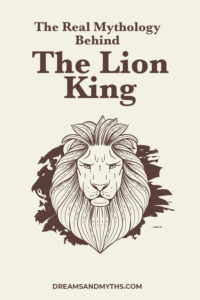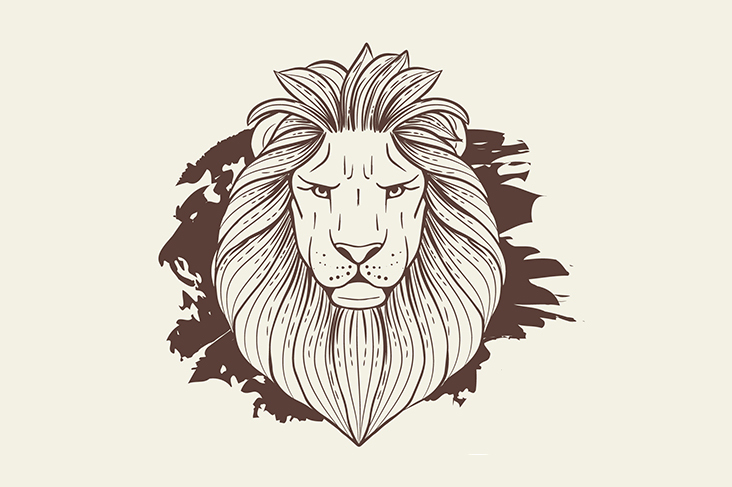One of the most beloved Disney movies of all time, The Lion King sits on a complex set of mythological stories and archetypal events. It is no accident that the animation transcended its key demographic. From Egyptian history to the Osiris mythological cycle, in this blog post, we’ll explore the key elements that color this beautiful coming-of-age story of Kingship, fatherhood, friendship, and community.
The Lion King is my brother’s favorite movie. My mother tells me stories of how he’d wake up, still sleep in his eyes, stumbling his way to the Lion King videotape.
He’d watch it over and over again. In the morning and before sleep.
What’s interesting is that I never watched it as a kid. By the time I was old enough, the videotape was lost and newer stuff had come out.
Eventually, with the aid of the internet, I decided to sit down and see what all the fuss is about. And if I’m being honest… I loved it!
Both the original animation and the new version.
It struck a chord, something primordial. Because it wasn’t really a story about lions and talking hyenas. No, it was something deeper.
There’s a story behind a rather simple plot, a mythological story.
One we’ve been saying for millennia to one another, but using different names and locations under the veil of different cultures.
Let’s explore the real mythology behind The Lion King!
(Warning: Spoilers ahead!)

The Solar Cult
If I had to describe this blog post with one sentence, that would be: Egyptian Mythology.
Because the Lion King IS essentially a retelling of the Osiris Myth – one of the most influential stories of the ancient Egyptian civilization.
But before we get into the nitty-gritty, we need to outline some of the larger themes that the film drew from that glorious culture.
Mainly, the Solar Cult. And I’d argue that it’s a cult everyone is a part of. After all, the Sun is quite literally the embodiment of all life.
Egyptians understood this. The Sun rises and sets without fail, every day. It is a symbol of divine order and stability – Goddess Ma’at, the daughter of Ra.
But Ma’at is more than a deity. It is a thematic concept; the subtle forces that keep the Universe from imploding. In the Lion King, this is called “the Circle of Life”. And it encompasses all things, how they live and how they pass on.
If you disturb this balance, you’ll break the circle and chaos will ensue.
This underpins a sense of morality, a kind of subconscious urge to be good and kind. The Egyptians were influenced by this, otherwise, metaphysical essence of the universe.
Because death was merely a continuation of life (again, the shape of the circle…), where they’d pass through the Hall of Judgement and balance their hearts against the feather of Truth of Ma’at.
As the Sun Rises
In the Lion King two interesting quotes solidify this connection:
“As the Sun rises in the East and sets in the West…”
“A king’s time as ruler rises and falls like the sun. One day, Simba, the sun will set on my time here, and will rise with you as the new king.”
This tells us that there are rules, rules that define a prophecy. More than that, it connects the rule of the Pharaoh with the divine order; the Kings of Egypt were considered more than humans.
Egyptians also believed that the West is the land of the dead. That’s why they built their necropolises west of the river Nile.
The Myth of Osiris in the Lion King
Now that we’ve established some context about Egyptian mythology, let’s see how it’s connected with the customs and traditions.
People of Kemet believed to be descended from Osiris, Isis, and Horus. The King would wear the double crown of Horus, which was imbued with His spirit, “ba”.
It’s important to notice that it was a double crown. At one point, Egypt was split in two; the upper and lower Egypt. In the Lion King, we see the tension between Pride Rock, filled with life (similar to Egypt and the river Nile) and the desert where the hyenas reside. But we’ll talk about that more in a bit.
The double crown represents the unity of the two and the reconciliation of Horus and Set.
This is merely a political device tied to the mythology of Osiris, which we’re going to briefly cover right now.
The Myth of Osiris
The Archenemy of Osiris is Set. He killed his brother, cutting his body into 14 pieces and scattering it all over the world.
Isis, the wife of Osiris, went looking for them the same way Nala in the Lion King looks for help.
Plutarch in Moralia reveals that this is an allegorical tale, pertaining to the phases of the moon – Osiris representing the silver celestial body; the 14 pieces of Osiris are the 14 days it takes from full moon to new moon.
Egyptian Gods in the Lion King
OK, now let’s break each character into their equivalent deity.
Osiris and Set
Mufasa is Osiris. He’s the King, betrayed by his brother Scar, which is Set. Following the myth, Scar betrays his brother and becomes the “alpha male” of Pride Rock. Egyptians had stories about the “lack of masculinity” of Set, so power was something he always needed to compensate – similar to the position of the alpha male.
- Set is the God of the Desert
- Osiris is the God of Fertility
We see that Pride Land turns from an oasis into a desert when natural order (Ma’at) is collapsed, signifying the reign of Scar (Set).
Simba is Horus
Or the New Osiris. He defeats Scar by calling upon the divine nemesis. Mufasa taught Simba that the Kings live in the stars and they’ll always guide and protect him. Indeed, the ancient Kings of Egypt formed some sort of collective entity.
At the end of the Lion King, we see that Simba restores natural order. He embodies the Ultimate King Archetype, a divine King, King of the Living and the Dead and the realm of the setting Sun.
Rafiki is Thoth
Thoth corresponds with Hermes in Greek mythology. Both of them were fond of humanity, aiding it every step of the way. These deities appear when you’re at crossroads – literally and metaphorically. Guardians of the liminal space, between life and death, they are the Master to the zealot.
The God of Language, Science and Magic, Rafiki becomes the guide of young Simba. Like the Shaman, he initiates the young King into the mysteries of life, bestowing upon him the strength he needs.
Interestingly, the sacred animals of Thoth are the baboon and ibis…
Nala is Isis
At least the manifestation of her divine qualities. She becomes the companion of the new King, trying to find him when he is in danger.
Hyenas are Annubis and Wepwamet
Seth’s sons were Annubis and Wepwart. Both are represented by canine animals!
Annubis, in certain periods, would judge which soul could pass on through the Hall of Judgement. And Wepwamet was a deity associated with war and the clearing of passages.
Timon and Pumba
While there isn’t a perfect correspondence for these two, they’re the Epicurian spirit to Simba’s journey. They embody the value of friendship and productive naivete to light the burden of the soon-to-be King.
They are the archetypal “Fool”.
“When you want to smile then visit me: sleek, and fat I’m a hog, well-cared-for, one of Epicurus’ herd”.
– Horace
The Monomyth of the Lion King
Lastly, it’s quite hard not to see the timeless format that Disney is using in all of their animated movies – the Lion King is no exception.
The Hero’s Journey, the Monomyth, is something we’ve discussed multiple times in our blog. But it remains an inspiration and an invaluable tool to break down mythology.
It’s fascinating how you can observe each step. The Call to Adventure, the Helpers, the Beginning of the Transformation, the Mentor, etc.
And alongside that, the Jungian Archetypes and how they manifest in different animals. It’s almost TOO obvious at certain points.
Jungian Archetypes in the Lion King
We can see a lot of psychological patterns, as described by Jung, playing out in the Lion King movie. From the Shadow of Mufasa (his brother Scar) to the internal transformation of Simba.
Specifically, we could assign the main characters to different clusters of Jungian Archetypes, representing their journey.
Rafiki being the Magician and the Sage. Mufasa being the King. Timon and Pumba the Jester and the Explorer. Scar the Rebel.
But what I found fascinating is that Simba manifests EVERY Archetype. From the Innocent to the King.
Through his interactions with the different Archetypes, he gets in touch with their manifestation inside him. In the end, he has integrated everything into one. The ultimate goal of Jungian psychoanalysis.
Think about it. Each aspect of Simba’s rise to Kingship contains a lesson corresponding with an Archetype.
He begins as the Innocent. Naivete and ignorance of the ugliness of the world characterize him. He becomes an Orphan, he then Explores the jungle and understands the importance of having Fun. During his lessons with Rafiki, he becomes Wiser and realizes he has to Rebel against Scar. I could go on and on!
Of course, this is closer to real-life than not…
Your Pride Rock
I always want to ground the mythological into our mundane reality. And the Lion King fits perfectly into our concept of Applied Mythology.
It’s one of those stories that contain multiple layers of meaning, so it accepts multiple interpretations.
So, if you believe you can take the mythological framework of the Lion King and apply it to your life, I’d love to hear it in the comments below.
Where’s YOUR Pride Rock?
